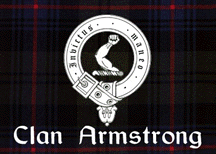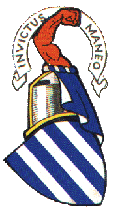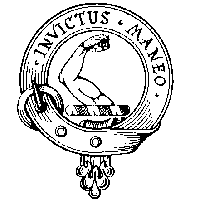
|
Armstrongs on the Net Clan Armstrong Discussion Area Clan Armstrong Contacts |

|
Armstrongs on the Net Clan Armstrong Discussion Area Clan Armstrong Contacts |


The Armstrongs continued to expand their influence into the valleys of the Esk and Ewes, and in about 1425, John, brother of Armstrong of Mangerton, in Liddesdale, built a strong tower. The Armstrongs were said to be able to raise three thousand horsemen and at one point were in virtual control of the debateable land. In 1528 the English warden of the marches, Lord Dacre, attacked and raised the Armstrong tower but the English response was to burn Netherby. The Armstrongs' power was seen as a threat by James V to his own authority and, according to tradition, the king tricked John of Gilnockie to a meeting near Hawick, where the King hanged the laird without further ado. The historian Piscottie attributes to Armstrong the brave retort that
'King Harry would downweigh my best horse with gold to know I were condemned to die this day'.King James was to rue his treatment of the Armstrongs when they failed to support him at the Battle of Solway Moss in 1542.
 The union of the Crowns in 1603 brought an official end to the Anglo-Scottish border wars and the last of the Armstrong lairds was hanged in Edinburgh in 1610 for leading a reiving raid on Penrith. A ruthless campaign followed as the Crown attempted to pacify the Borders. The families were scattered and many sought new homes in Ulster, particularly in Fermanagh. Armstrong is now among the fifty most common Ulster surnames.
The union of the Crowns in 1603 brought an official end to the Anglo-Scottish border wars and the last of the Armstrong lairds was hanged in Edinburgh in 1610 for leading a reiving raid on Penrith. A ruthless campaign followed as the Crown attempted to pacify the Borders. The families were scattered and many sought new homes in Ulster, particularly in Fermanagh. Armstrong is now among the fifty most common Ulster surnames.
There have been many distinguished Armstrongs, including Sir Alexander Armstrong, the Arctic explorer and, in keeping with the Armstrong spirit of adventure, the most far-travelled must be Neil Armstrong, the first man to walk upon the moon. There has been no trace of the Armstrong chiefs since the dispersal of the clan in the seventeenth century, but a powerful and active clan association is in existence and the Clan Armstrong Trust was established in 1978.






